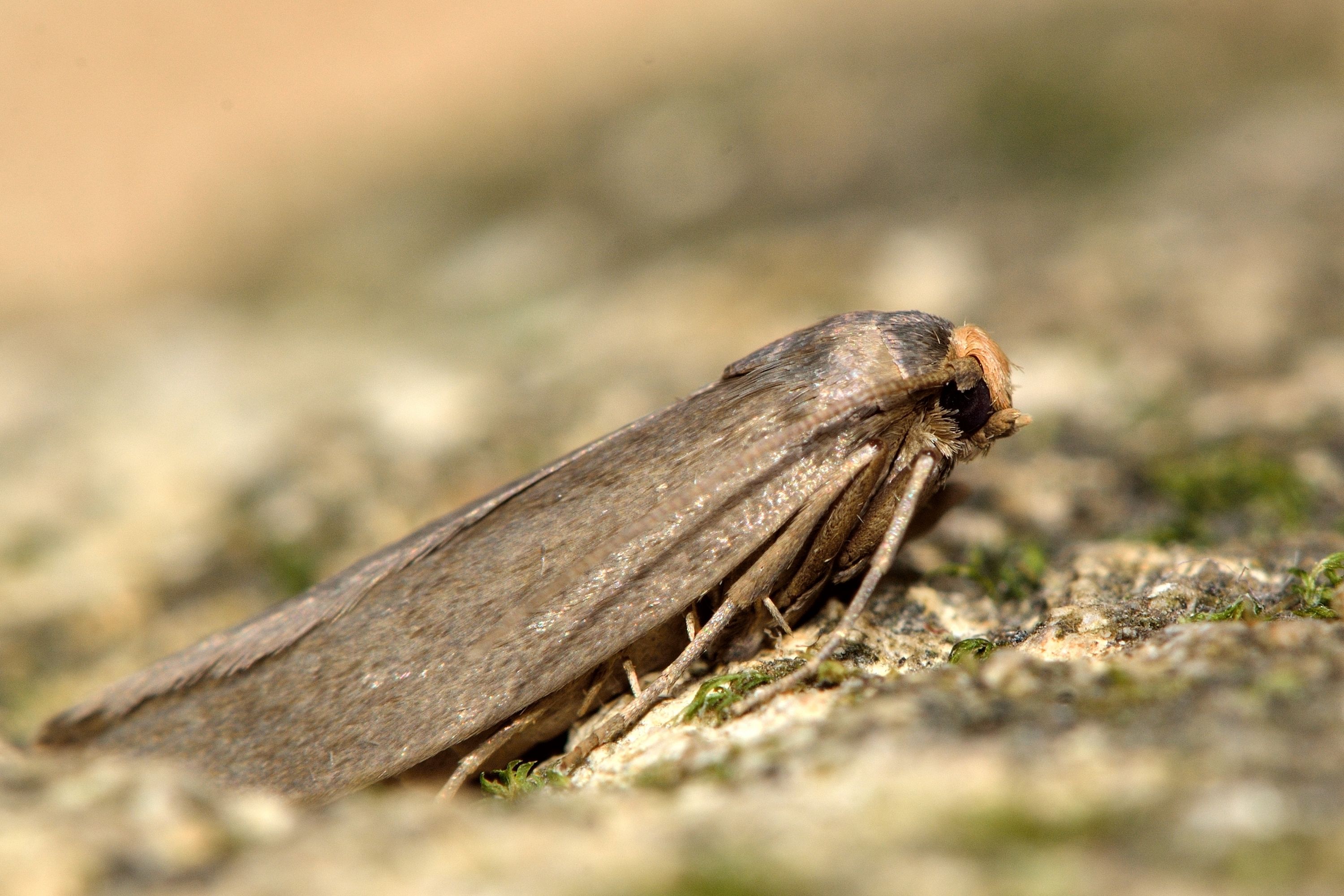Achroia grisella
(Achroia grisella)

Description
The lesser wax moth (Achroia grisella) is a small moth of the snout moth family (Pyralidae) that belongs to the subfamily Galleriinae. The species was first described by Johan Christian Fabricius in 1794. Adults are about 0.5 inches (13 mm) in length and have a distinct yellow head with a silver-grey or beige body. Lesser wax moths are common in most parts of the world, except in areas with cold climates. Their geographic spread was aided by humans who inadvertently introduced them to many regions worldwide. The mating systems of the lesser wax moth are well researched because they involve sound production. Lesser wax males produce ultrasonic pulses in order to attract females. Females seek the most attractive males and base their decisions on characteristics of the male sound. While sex pheromones are also emitted by the males, male calling is more effective in attracting mates. Because lesser wax moths eat unoccupied honey bee combs, they are considered pests to bees and beekeepers. However, unoccupied combs can harbor harmful pathogens that inflict damage to neighboring insects. By eating the combs, the moths can reduce the harm to insects of that region and provide a clean space for other organisms to inhabit. Lesser wax moths are known or suspected to inhabit most of Africa (including Madagascar), Australia, Europe (especially some more remote regions, such as Greece) and North America, as well as parts of the Neotropics (such as Colombia, Jamaica, Puerto Rico and Trinidad), the Bengal region, Japan, Sri Lanka, and the Marquesas Islands and Tahiti in French Polynesia. Lesser wax moths are found everywhere that honey bees are present, but they are more successful in warmer, tropical areas than in colder climates. Although they cannot live in freezing temperatures for an extended period, they are more successful in lower temperatures than the related greater wax moth. Feeding occurs only during the larval life stage. Larvae feed on weak bee colonies. Therefore, the amount of food that the larvae can eat depends on the amount of material that the bee colony produced, as well as the number of moth generations that have persisted on the same comb since the initial infestation began. Larvae move through the bee comb and spin silk tunnels. They cover the silk with their frass. Tunneling through honeycombs not only provides food, but also protects the larvae from the defending worker bees.
Taxonomic tree:







